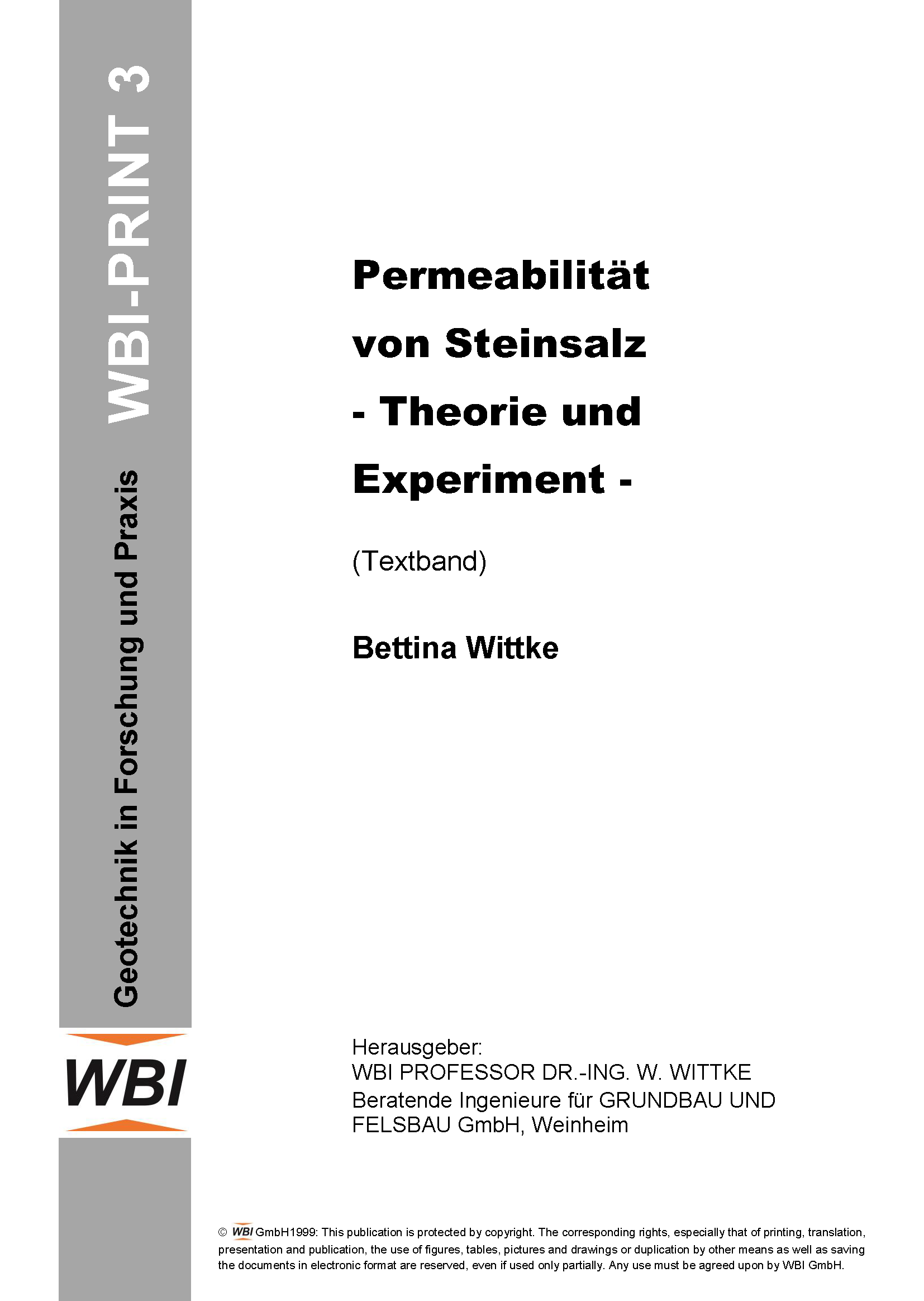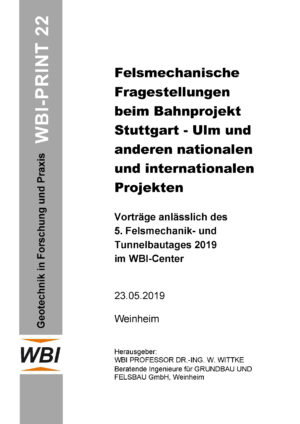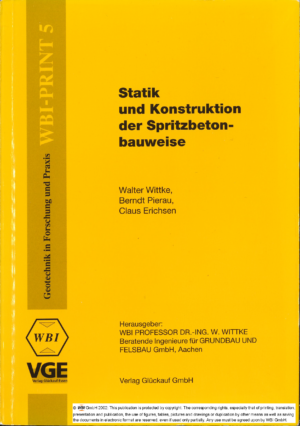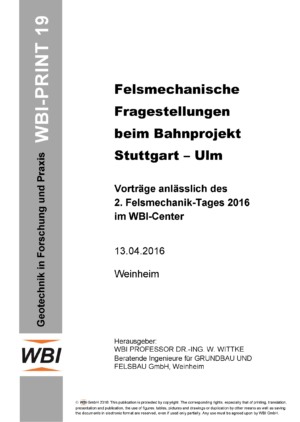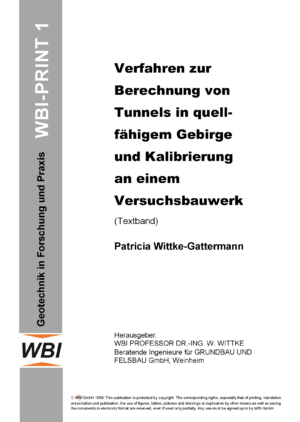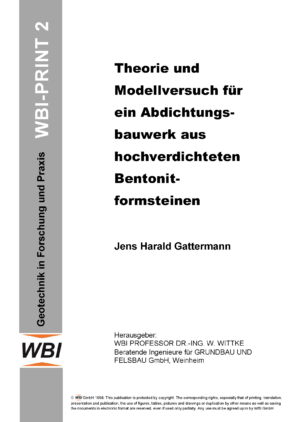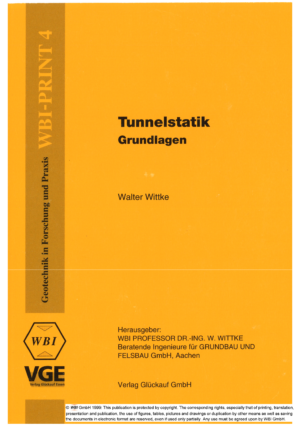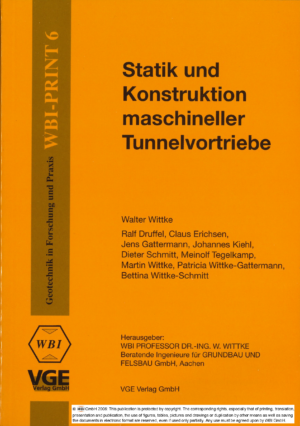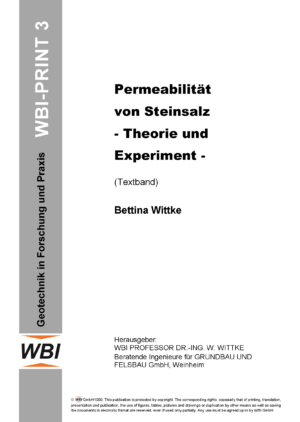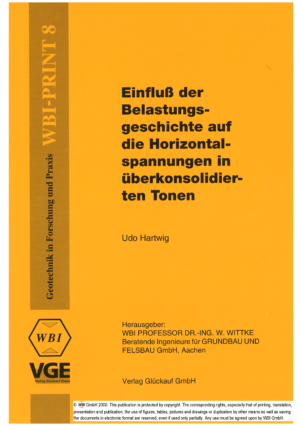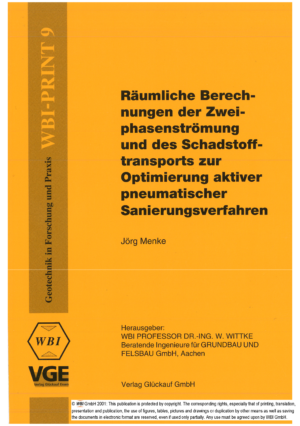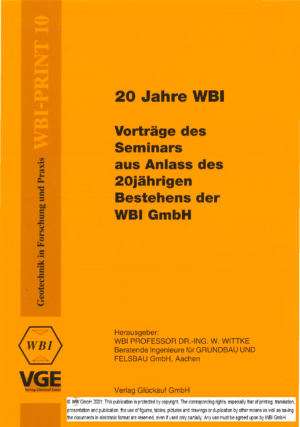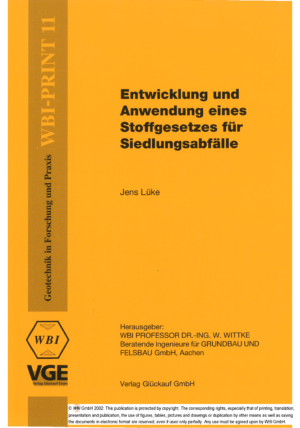Summary:
At present, various sealing systems for the nuclear repository Morsleben (ERAM), Germany, are being designed. In this connection, the permeability of the salt rock next to the shafts Bartensleben and Marie of the mine is an important factor. It has to be considered that a disturbed rock zone with higher permeabilities has developed around the shafts because of their great age of up to 100 years.
In order to determine the permeability of the salt rock and the extent of the disturbed rock zone next to the shafts, four testing locations with three boreholes each are investigated. In the scope of the given thesis the experimental requirements have been set up, the theoretical base for the interpretation of experimental data has been founded and the tests in the first borehole have
been conducted and interpreted.
Because of the very low permeability of salt rock high demands have to be made with regard to the measurement of injected volumes and pressures. Moreover, for the detailed determination of the permeability in the area next to the shafts, packers and test intervals have to be of short length and the configuration of the packersystems needs to be flexible. Common test equipments for in-situ-permeability tests do not meet these requirements. Therefore, a new test equipment has been conceived and built for the tests in the Morsleben shafts.
Factors such as the deformability of the test equipment, e.g. the packer elements, and the condition of the test fluid may have a considerable influence on the measurement results. In order to quantify these factors and to test the function of the equipment, laboratory tests have been made. Further possible influences on the experimental results such as displacements of the borehole wall and temperature changes have been quantified mathematically.
For the interpretation of the in-situ-permeability tests two different models have been advanced and used. On the one hand side, interpretations have been based on a model for three-dimensional, transient single-phase-flow of brine in a porous, saturated salt rock assuming the brine and the salt rock to be compressible. The other model used deals with three-dimensional, transient two-phase-flow of gas and brine in a porous, partially saturated salt rock assuming the gas to be compressible and the brine and salt rock to be incompressible. Both models are implemented in three-dimensional finite element programme systems.
The interpretation of experimental data was made with these programme systems after determining the essential parameters by means of sensitivity analyses. The interpretation of the measurement results led to a permeability of around 3×10-18 m² directly next to the shaft Marie, which is diminishing with increasing distance to the shaft.


